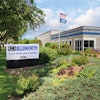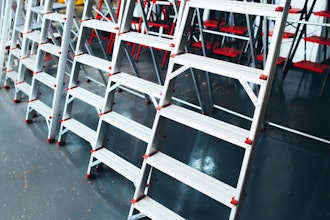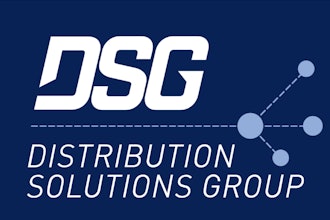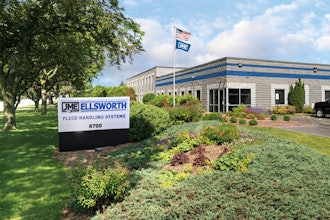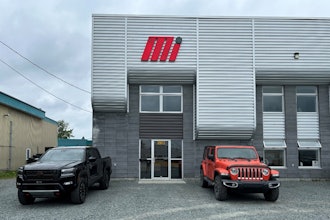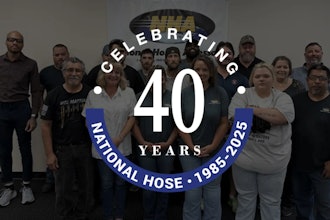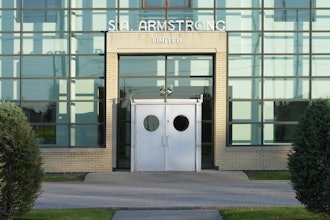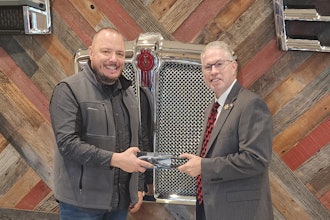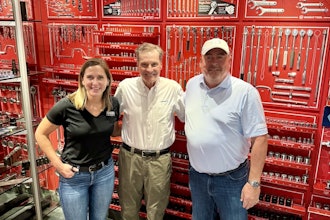
Although Evolution Motion Solutions may be a new and unfamiliar moniker, you’d be hard-pressed to find someone in this industry who doesn’t recognize the names Womack Machine Supply and Morrell Group.
But despite the decades of brand equity behind Womack and Morrell, a November announcement revealed a “new chapter” and a new name for these partner companies and their subsidiaries.
For Matt Oldroyd, Evolution Motion Solutions’ CEO, the rebrand brings exactly the right characterization to the firm: a distribution company that takes traditional automation and fluid power expertise and pairs it with specialized solutions that target the needs of the modern industrial customer.
A Company Evolution

In 2023, Womack’s private equity partner, Platte River Equity Group, announced that Morrell Group had joined the fold, a combination that Mark Majewski, president of industrial and factory automation at Morrell, said “opens up a whole new world for us.” The combination was set to create one of the largest automation and fluid power distributors in the country, so – after the dust settled – the duo made the marriage official with a name change.
In November of 2024, Womack Machine Supply, Morrell Group and their partner companies – all Womack Group subsidiaries – announced that they’d rebranded as Evolution Motion Solutions.
Since both firms were well established in motion control, it seemed like their collective experience would serve them well. Now, with 20 locations, Evolution serves 31 U.S. states and one Canadian province, offering a range of solutions that Evolution says is “designed to improve productivity, reliability and performance.”
Mark Garrett, president of Mobile North at Evolution, added that this combination and expansion will “leave a lasting community impact across the U.S.” as the company continues to grow under one new brand.
World’s First ESV

Secondly, the rebrand would serve as an internal unifying event, as well.
“We recognized that it’s critical for us to be a single team representing Evolution across the country,” Oldroyd said. “And we’ve had great success where our people are excited about the future and where we’re headed.”
For Evolution, that future takes the form of the world’s first “ESV.” Evolution leaders believe the company offers more than just a traditional distribution business model, therefore, their identity has coalesced around a three-pronged approach: engineering partner, systems integrator and value- added distributor.
From an engineering perspective, Evolution hopes to fill a gap, leveraging its skilled engineering team to partner with customers to extend their capabilities.

Lastly, the V in ESV brings distribution industry savvy by way of more traditional value-added services like kitting, inventory management, packaging and labeling — “things that we can do to take the load off our customers, make their lives easier and make their production facilities more efficient,” said Oldroyd.
Classic problem-solving is key to the Evolution Motion strategy, but there are also other timely trends that the company wishes to capitalize on with ESV.
“We’re all having the same struggle to find the right people,” said Oldroyd. “That’s where we come in with our ESV strategy. To bolster [customers], we can be that engineering partner or build that custom system. We can take a number of things off your plate.”
The ‘Why’ Behind Automation
Another, more macro issue that’s been a part of the Evolution strategy is how it can play a role in providing resources amid more reshoring activity. When manufacturing expands, is the necessary labor available to address new projects?
Oldroyd believes that, in cases where demographic gaps are leading to worker shortages, automation can play a big role. And while Evolution sees “a lot of opportunities with automation,” he stresses that it’s not with an objective of replacing workers. Instead, “we want to elevate your people,” he explained. “Let’s take the dirty, mundane, dangerous jobs and automate those as much as we can.” In lockstep, “let’s elevate your people and help them take on more responsibility and do things that machines can’t do. And that, ultimately, is a win-win.”
Further walking the talk, Evolution places a priority on using leading-edge technologies within its own operations. And, often, Oldroyd said, it’s about asking the right questions.

Outside of the internal objectives toward efficiency is the driving force for the organization: what the results mean for the customer. The question, then, becomes “how can we help you take your solution to the next level and leapfrog your competition?” says Oldroyd.
An example of this is the ability of software to enable hardware in completely new ways. Oldroyd illustrates this by noting the results of applying electrical controls to traditional hydraulic applications. The result is much more visibility and, with it, the ability to control the equipment much more precisely.
“I think we’re just getting started with what our capabilities will be,” he said. “The key for us is, how to stay ahead from a technical standpoint, so that as new technology comes in, we’re able to leverage that and, ultimately, implement it for our customers.”
‘We Need to Make Our Own Luck’
For Evolution, the customer is always key, because failing to identify their needs in real time provides a potential opening for the competition. That’s why Oldroyd sees continuous improvement of the value proposition as a key strategic pillar going forward.
“Making sure you’re providing measurable value to your customers – beyond just providing products – is critical, and continues to be, even though there will always be pressure from both suppliers and customers,” said Oldroyd.

Further uncertainty means this year could be anybody’s guess in terms of macroeconomic pressures. Still, “we’re excited about what we offer,” said Oldroyd.
“No matter what’s going on in the world, we feel like we need to make our own luck. That’s what helps us feel confident in our future.”




